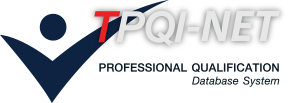หน่วยสมรรถนะ
Inspect, test and troubleshoot basic aircraft electrical systems and components.
สาขาวิชาชีพการบิน
รายละเอียดหน่วยสมรรถนะ
| 1. รหัสหน่วยสมรรถนะ | AVT-FTN-4-072ZA |
| 2. ชื่อหน่วยสมรรถนะ | Inspect, test and troubleshoot basic aircraft electrical systems and components. |
| 3. ทบทวนครั้งที่ | - / - |
| 4. สร้างใหม่ |
|
ปรับปรุง |
|
| 5. สำหรับชื่ออาชีพและรหัสอาชีพ (Occupational Classification) | |
|
|
|
| 6. คำอธิบายหน่วยสมรรถนะ (Description of Unit of Competency) | |
| This unit of competency requires the application of manual skills and the use of the knowledge system / components and equipment applicable to inspect, test and troubleshoot systems direct current (DC) electric aircraft and aircraft components rotary wing test fixed and having only DC electrical systems during scheduled or unscheduled maintenance. The work can be done individually or as part of a team. | |
| 7. สำหรับระดับคุณวุฒิ |
| 1 | 2 | 3 | 4 | 5 | 6 | 7 | 8 |
|---|---|---|---|---|---|---|---|
| 8. กลุ่มอาชีพ (Sector) | |
| 10 Aircraft Mechanics | |
| 9. ชื่ออาชีพและรหัสอาชีพอื่นที่หน่วยสมรรถนะนี้สามารถใช้ได้ (ถ้ามี) | |
| 103 Aircraft Maintenance: Avionics | |
| 10. ข้อกำหนดหรือกฎระเบียบที่เกี่ยวข้อง (Licensing or Regulation Related) (ถ้ามี) | |
| ICAO Doc 7192 / EASA Part 66 | |
| 11. สมรรถนะย่อยและเกณฑ์การปฏิบัติงาน (Elements and Performance Criteria) |
| หน่วยสมรรถนะย่อย (EOC) | เกณฑ์ในการปฏิบัติงาน (Performance Criteria) | รหัส PC (ตามเล่มมาตรฐาน) |
รหัส PC (จากระบบ) |
|---|---|---|---|
| 103401.01 Inspect DC aircraft electrical systems and components. | 103401.01.01 documentation for maintenance and modification status,including reports of system defects if any, are used to identify specificinspection requirements. Isolation tags are checked andaircraft configured for safe system inspection and operation in accordancewith the applicable maintenance manual | 103401.01.01 | 71254 |
| 103401.01 Inspect DC aircraft electrical systems and components. | 103401.01.02 DC electrical systemvisually or physically checked for external signs of defects in accordancewith the maintenance manual applicable to observe all safety requirements (WHS) and the relevant occupationalhealth, and defects are correctly identified and reported | 103401.01.02 | 71255 |
| 103401.02 Test/adjust DC aircraft electrical systems. | 103401.02.01 Aircraft and system are prepared in accordance withapplicable maintenance manual for the application of power system operation | 103401.02.01 | 71256 |
| 103401.02 Test/adjust DC aircraft electrical systems. | 103401.02.02 Electrical system isfunctionally tested in accordance with maintenance manual for evidence ofserviceability or malfunction , and system calibration or adjustments areperformed in accordance with maintenance manual, as appropriate | 103401.02.02 | 71257 |
| 103401.03 Troubleshoot DC aircraft electrical systems. | 103401.03.01 Available information from maintenance documentation andinspection and test results is used, where necessary, to assist in faultdetermination. Maintenance manual fault diagnosis guidesand logic processes are used to ensure efficient and accurate troubleshootingto line replacement level | 103401.03.01 | 71258 |
| 103401.03 Troubleshoot DC aircraft electrical systems. | 103401.03.02 Specialist advice isobtained, where required, to assist with the troubleshooting process. system failures are and the causes of faults are clearlyidentified and recorded properly in the maintenance documentation, wherenecessary and in accordance with standard procedures for companies, andrectification requirements are determined | 103401.03.02 | 71259 |
| 12. ความรู้และทักษะก่อนหน้าที่จำเป็น (Pre-requisite Skill & Knowledge) | |
| N/A | |
| 13. ทักษะและความรู้ที่ต้องการ (Required Skills and Knowledge) | |
|
(ก) ความต้องการด้านทักษะ
(ข) ความต้องการด้านความรู้
|
|
| 14. หลักฐานที่ต้องการ (Evidence Guide) | |
|
Assessment methods |
|
| 15. ขอบเขต (Range Statement) | |
|
N/A |
|
| 16. หน่วยสมรรถนะร่วม (ถ้ามี) | |
| N/A | |
| 17. อุตสาหกรรมร่วม/กลุ่มอาชีพร่วม (ถ้ามี) | |
| N/A | |
| 18. รายละเอียดกระบวนการและวิธีการประเมิน (Assessment Description and Procedure) | |
|
• people who have already reached evaluated Keep MEA274 light aircraft electrical systems and core components have met the requirements of this unit with respect to the common range of varying conditions. The Registry of industry experience and accomplishments related records Keep MEA274 be accepted as meeting the requirements of evidence for this unit in public areas apply the basic light aircraft electrical systems and components. |
|
